United States
Homeland Security Data Reveals the Origins and New Homes of Naturalized Citizens
Dara Lind provides insight on new data on U.S. naturalizations released by the U.S. Department of Homeland Security. In all, 779,929 immigrants became U.S. citizens in 2013.
'Innovation Hubs' Called a Manufacturing Silver Bullet
A recent Wall Street Journal editorial calls for "Topic-specific, industry-led, and place-based…public-private hubs" as the key to a manufacturing renaissance. The idea is already being tested in four cities.
Will Obama's Climate Initiative Become the Obamacare of Regulations?
EPA's new Clean Power Plan Rule has taken on a political life of its own, with coal states adamantly opposed, helping those who allege that the administration is waging a "war on coal." We also look at the basis of the rule in the 1970 Clean Air Act.
'Structurally Deficient' Bridges on the Decline—Can States Continue the Trend?
All but nine states have decreased the number of "structurally deficient" bridges since the 2007 Minneapolis bridge collapse. That improvement, however, is far from permanent. Can the federal government and states maintain their progress?
Tracking the Rate of Sprawl for U.S. Cities between 2000 and 2010
Many studies have measured and compared the sprawl of U.S. metropolitan areas. A recent study tracks the rate at which the same cities grew either less compact or more compact for the decade between 2000 and 2010.
How to Prevent National Forests Becoming 'National Ashtrays'
An editorial calls for innovative policy in post-fire recovery and reforestation. The recent release of the Environmental Impact Statement for the recovery of the Rim Fire should serve as a barometer for a "new public forestry."
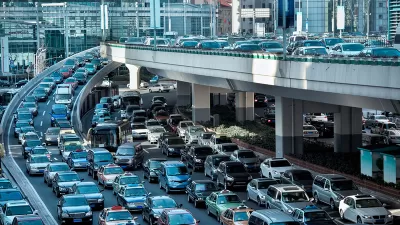
Arguing for Cars, Not Transit, as a Poverty Solution
Data show that cars are more effective than transit in providing poor people to jobs and economic opportunity. But does that mean transit systems are fundamentally inadequate or just currently inadequate?
Study Evaluates Protected Bike Lanes in the United States
The National Institute for Transportation and Communities released a new study this week called "Lessons from the Green Lanes: Evaluating Protected Bike Lanes in the U.S."
The McMansion Strikes Back: New American Homes are Larger than Ever
According to new date from the U.S. Census, McMansions are back. In fact, the data indicates that the housing crash and recession was a temporary pause in the long-term trend of the always-expanding American home.
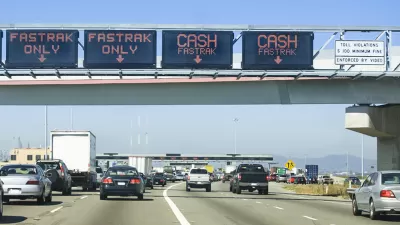
Op-Ed: User Fees, Not General Funds, Should Fund Transportation
The Washington Post editorializes against the use of general funds to fill the Highway Trust Fund shortfall ($18 billion annually), whether they be dedicated funds or offsets, and evaluates proposals from President Barack Obama and House Republicans.

The New Transportation Mode of Choice for Urban Professionals: Skateboards
Although the skateboard's been around for a while, recent modifications to traditional designs are targeting skateboards for an older, wealthier demographic.
How Much Carbon Will Your State Cut under the EPA's New Rule?
A state-by-state breakdown of the U.S. Environmental Protection Agency's proposed carbon reduction rule reveals that some states will have to go far beyond the 30 percent goals for the country overall.
How to Build Grassroots Support for Urbanism
Andrew Keatts interviews Benjamin Ross, of Maryland's Purple Line advocacy fame, about what it takes to build local support for transit and urban design.
Could Viable Transportation Options End Drunk Driving?
A recent article by Sommer Mathis fills a void in supportive arguments for alternative forms of transportation: giving people more and better options not to drive, especially while drunk, is a massive public safety issue.
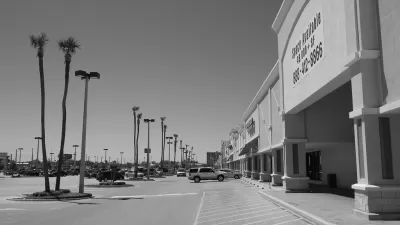
Should Preservationists Leave Space for Parking Lots?
Here's one you probably didn't see coming. A recent pair of articles makes the case for preservationists to find ways to protect surface parking lots.
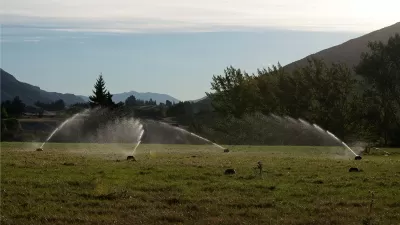
What Urban Planners Fail to Grasp in Climate Action Plans
Climate mitigation and adaptation have become de rigeur aspects of urban planning for most cities, according to results from MIT's international Urban Climate Change Governance Survey. What's missing in most plans is the link to economic development.
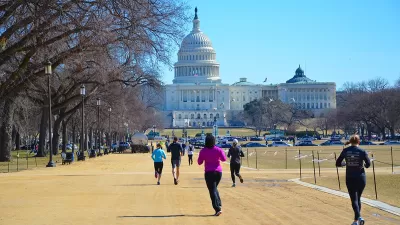
Ranking the Health and Fitness of Metro Areas (Infrastructure Matters)
Melanie Haiken shares insight into the findings of the American Fitness Index (AFI), which assesses the "Health and Community Fitness Status of the 50 Largest Metropolitan Areas."
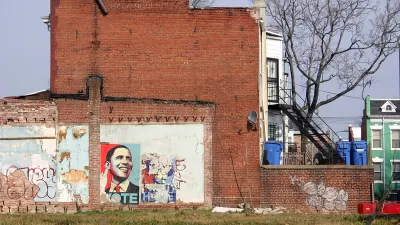
How 'Hipster Economics' Romanticizes Blight and Compounds Inequality
A recent article refutes arguments used to defend gentrification, and in so doing identifies a culprit in glossing over the negative effects of displacement in areas both urban and suburban: hipster economics.
Op-Ed: Time to End Reliance on Highway User Fees
It's time to fund federal transportation like most other nations do—rely less on highway user fees that dedicate funds to highways and transition to funding roads from the general fund, perhaps in the same amount that they contribute to GDP.
EPA Releases Carbon-Cutting Rule for Existing Power Plants
EPA Administrator Gina McCarthy announced on Monday the long-awaited proposed rule to reduce the largest source of carbon dioxide emissions. It calls for cuts of 30 percent by 2030, with the baseline year of 2005, to be finalized next year.
Pagination
Urban Design for Planners 1: Software Tools
This six-course series explores essential urban design concepts using open source software and equips planners with the tools they need to participate fully in the urban design process.
Planning for Universal Design
Learn the tools for implementing Universal Design in planning regulations.
planning NEXT
Appalachian Highlands Housing Partners
Mpact (founded as Rail~Volution)
City of Camden Redevelopment Agency
City of Astoria
City of Portland
City of Laramie


































